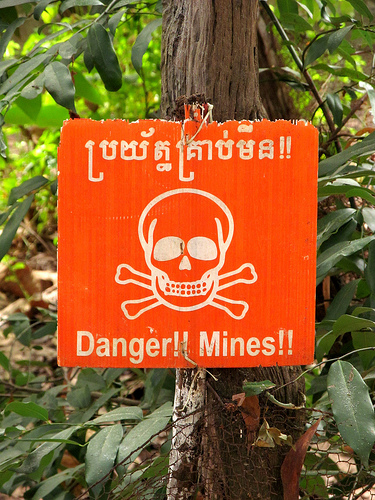
Update (10/27/2021): The Minnesota Supreme Court has now weighed in on this complicated dispute over the disposition of assets (farmland) in a trust. In our original post, we declined to make a prediction and we feel vindicated. The Court’s analysis is complicated and any attempt to predict it in advance would have ended badly.
Original post (12/3/2020): Long-time Minnesota Litigator readers will remember our irregular posts predicting “the next big wave” in civil litigation. Some seem widely recognized, even obvious (e.g., litigation spawned by the “Me Too” movement in which women (generally) sue men (generally) for alleged sexually inappropriate misconduct). Some seem less obvious (counties and others suing pharmaceuticals for widespread opiate addiction, misuse, and overdoses). Some of our predictions were probably just wrong (failed alternative energy projects) (or at least premature).
One that we noted six years ago and should all have seen for the past 30-40 years, at least, would be a rise in trust and estate litigation simply owing to the fact that our population has an anomalously large generation, the baby-boomers, now rounding the last bend on the track of life. Anecdotally, we have notice a jump in trust and estate litigation in LEVENTHAL pllc’s own practice.
This was brought to mind by the Schwagerl family dispute, which is to be decided by the Minnesota Supreme Court, which just granted a petition for review.
The Schwagerl family situation seems quite common (particularly in Minnesota and other states with large populations family farms). Lawrence and Phyllis had eight children, one of whom, Jerome, appears to have taken on farming the family farm, which his father had done.
The challenge, then, maybe obvious, is the apportionment of “mom and dad’s” assets, which, for the most part, is made up of the farmland between the many children, one of whom has a far greater interest (and, presumably, in his mind, a far greater claim) in the farmland.
A very simply solution is to provide that an appraisal be done of the family farmland on the deaths of “mom and dad” and give the child with the particular interest in the land a “right of first refusal” or an option to buy out his siblings. For reasons we’ll never know, however, Lawrence Schwagerl went this route but, on the same day, changed his mind. He removed the “option to purchase” clause from the trust. (See the Minnesota Court of Appeals decision, being appealed from and describing the facts, here.)
Lawrence died. His wife, Phyllis, then sold the land, below market value, to Jerome. Then Phyllis died. And one can easily see how some or all of Jerome’s siblings might balk at how things turned out.
The issue before the Minnesota Court of Appeals was, in essence, whether Phyllis, under the trust documents, had the authority to sell the farmland to Jerome. The Court of Appeals ruled that she did. Here is Barbara Higgenbotham’s petition for Supreme Court Review (a sister, we’re guessing). Here is the opposition filed by lawyers for Jerome (and others).
We are not going to predict the outcome of the Schwagerl dispute. (Among other things, we have not seen the Trust itself, which seems pretty important in analyzing the case.) We will, however, note that there appears to have been a lack of clarity in the Trust as to what was to be Phyllis’ and what was to be the Family Trust’s (and not Phyllis’) on the death of Lawrence. The dispute might be a useful case study for trust/estate lawyers.
Regardless of how the Schwagerl dispute is decided, it is fair to say that there is a widespread unspoken consensus in our society that, in general, children should share in equal parts on the death of their parents. When this is not the case (and even, to be clear, when it is the case), the risk of disputes, conflicts, and, particularly with larger estates, the risk of litigation is high (and costly).

